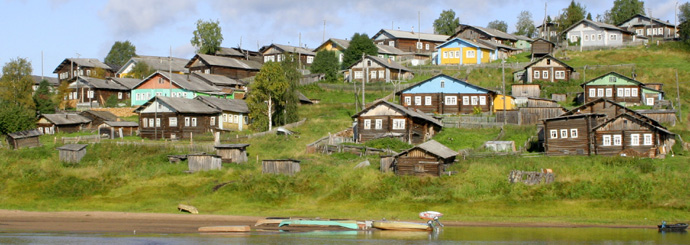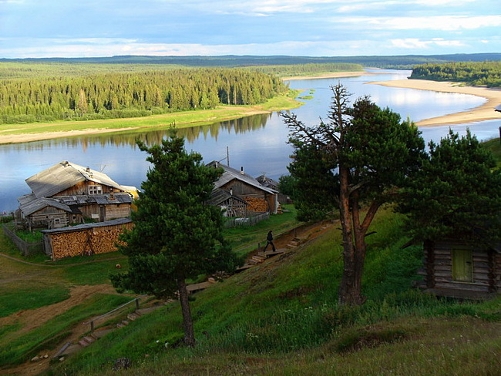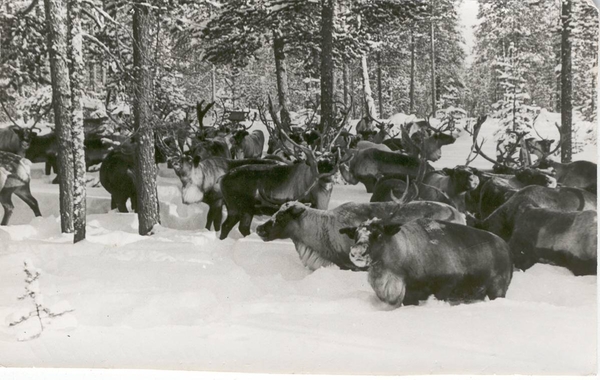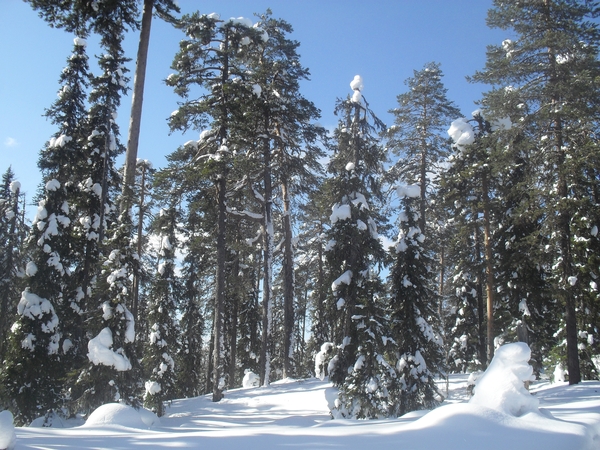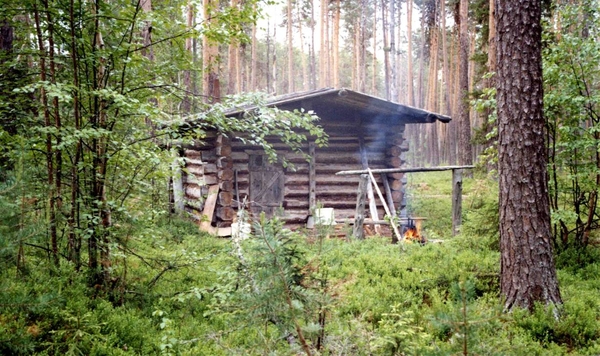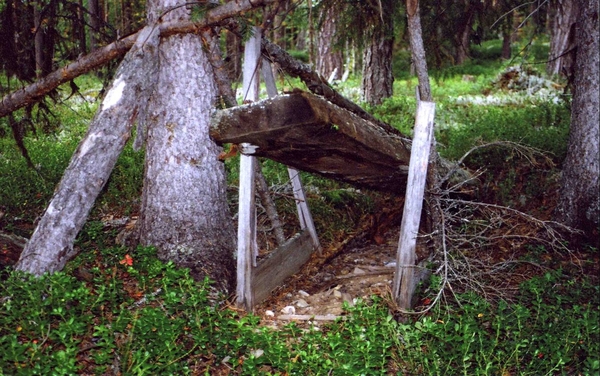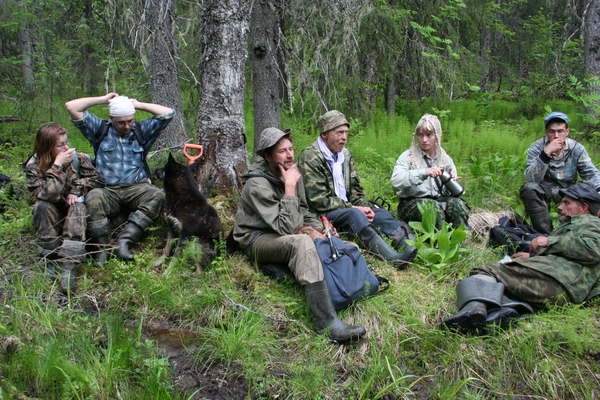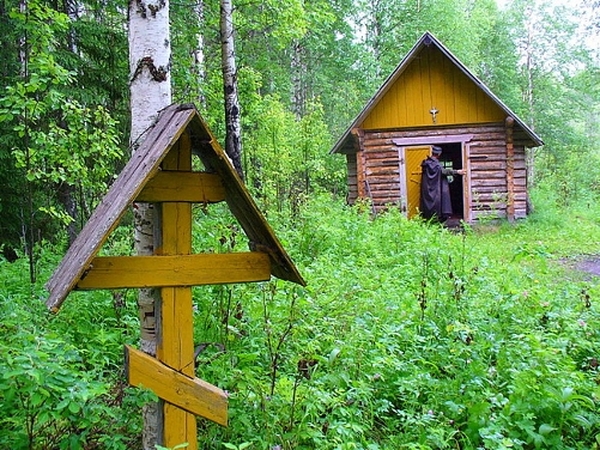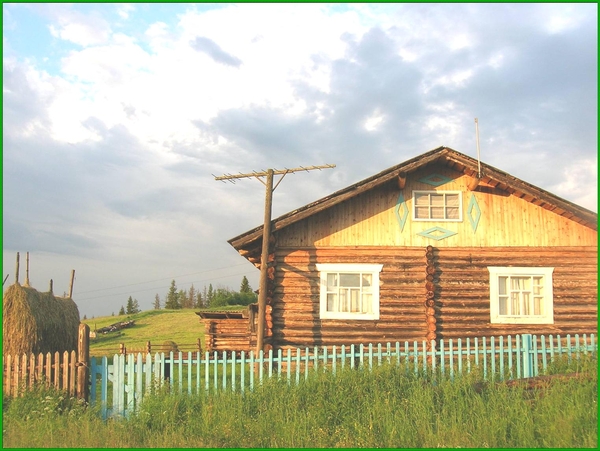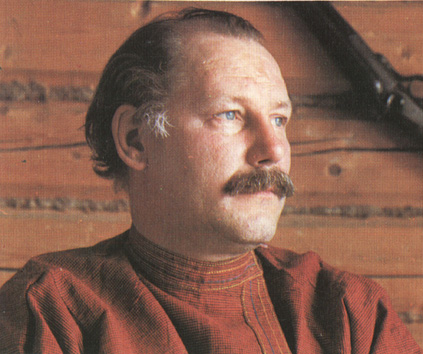«Forest Village» project
«Сьöлöмам нэм кежлö Пысса»
The overview of Bolshaya Pyssa village. Bolshaya Pyssa village is the land of hunters and poets.
Пысса, Пысса,
Сиктыс тайö ылысса.
Но ачыс Ен сетöма мен
Сьöлöмам нэм кежлö Пысса.
Yuri Vasyutov
“Bolshaya Pyssa village looks like a fairy town which spreads out on the “miracle fish-whale”: the tall bald hill dominates over the taiga and when you watch from afar, from twenty kilometers, it seems as if a giant creature studded with houses is floating on the green ocean”.
Gennady Mikheev who is one of citizens travelling through our country wrote and published these words about Pyssa village on his page in the Internet. He visited Pyssa village; and its primordial nature, its preserved history, the meetings with the local residents impressed him.
Bolshaya Pyssa is located on the left bank of the Mezen river 120 kilometers from Koslan, the administrative center of Udora district. According to historical documents Pyssa (Пыисдiн) was founded in 1600 by the two brothers Loginko and Andreyko Maksimov, migrants from Vazhgortskaya volost. The most common local last names Loginov and Andreev were formed from their names. In Sami language the village name, which was originated from the Pyis river, means “a sacred place”.
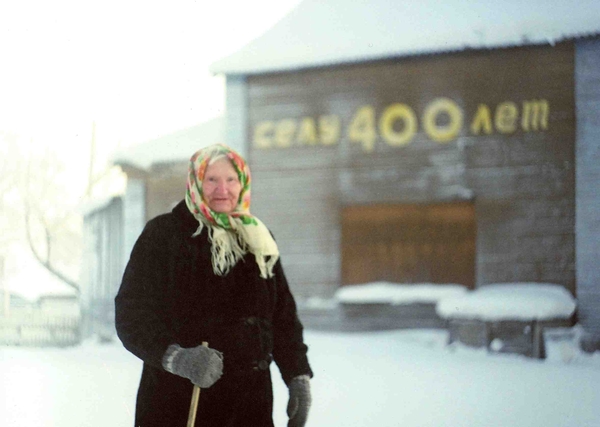 Gradually other settlements: Latyuga (1629), Patrakovo (1646), Malaya Pyssa (1707), Nebdino (1747), Ybula (the second half of 19th century) were founded around Pyssa. Before 17th century the territory of Verhnaya Mezen was unpopulated. There were separately disposed homes for hunting and fishing. Until the middle of 19th century hunting and fishing played the key role in the economy of the Udora Komi, agriculture was accessory. The role of pastoralism and agriculture increased only by the beginning of the 20th century and at the same time more and more people began to work in logging and in other seasonal jobs.
Gradually other settlements: Latyuga (1629), Patrakovo (1646), Malaya Pyssa (1707), Nebdino (1747), Ybula (the second half of 19th century) were founded around Pyssa. Before 17th century the territory of Verhnaya Mezen was unpopulated. There were separately disposed homes for hunting and fishing. Until the middle of 19th century hunting and fishing played the key role in the economy of the Udora Komi, agriculture was accessory. The role of pastoralism and agriculture increased only by the beginning of the 20th century and at the same time more and more people began to work in logging and in other seasonal jobs.
Pyssa residents worked also as taiga reindeer herders, they pastured reindeers nearby the villages on reindeer moss. Three kolkhozes (“Luch”, “M. Gorky”, “Im. Ilicha”) of Pyssky Selsoviet kept about 2000 reindeers. In 1960s the livestock of reindeer was eliminated and the sovkhoz which was organized in1961 and its branch in Pyssa was specialized on dairy and meat production. The branch kept 1000 heads of cattle. A.F. Loginova, S.S. Loginova and R.N. Popova, Pyssa dairymaids, were awarded by government award for high rates of milk yield. In the same period the building of individual houses in the village was intensive. In 1961 a local airport was put into operation and twice a day there were organized regular passenger flights by the Antonov AN-2 plane from the regional centre, but in 2000 the airport was closed.
In Soviet period Barmsky, the logging depot of Udora lespromkhoz (timber industry enterprise), was in operation near Pyssa. It employed about 170 people including the loggers – order-bearers: A.E. Afanasiev, P.M. Puvkoev, V.E. Andreev who became famous in the whole of the Komi Republic.
Unfortunately, two reasons: 1) extensive clear-cutting which leaded to the depletion of forest resources and to the gradual curtailment of the logging industry in the district and 2) the closure of the kolkhoz caused unemployment and people migration from the village.
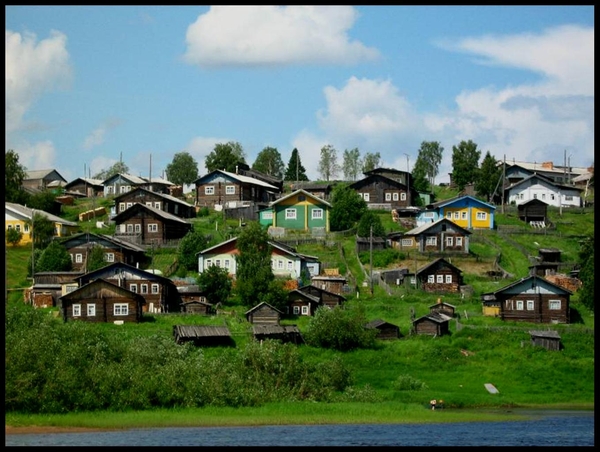 Nowadays Bolshaya Pyssa rural settlement consists of the following five villages: Bolshaya Pyssa big village and Latyuga, Malaya Pyssa, Politovo, Patrakovo villages. 630 people live in the settlement and 360 of them live in Bolshaya Pyssa. There is a secondary school in which about fifty pupils study, a kindergarten, a district hospital, a post office, a division of the regional forest district. “Hozyaystvennaya Brigada” the municipal unitary enterprise provides the villagers with firewood and with sawn wood products. Under the contracts with the administration it services also the ferry and does different repair works. The villagers have cows, goats, sheep and horses. They use for their own needs potato and garden crops as well as meat and milk. There is no all-season road to the regional center so it is impossible to sell agricultural products in other settlements. The lack of the road for the residents of Bolshaya Pyssa is the main problem and one of the major obstructive for the future development of the ancient village.
Nowadays Bolshaya Pyssa rural settlement consists of the following five villages: Bolshaya Pyssa big village and Latyuga, Malaya Pyssa, Politovo, Patrakovo villages. 630 people live in the settlement and 360 of them live in Bolshaya Pyssa. There is a secondary school in which about fifty pupils study, a kindergarten, a district hospital, a post office, a division of the regional forest district. “Hozyaystvennaya Brigada” the municipal unitary enterprise provides the villagers with firewood and with sawn wood products. Under the contracts with the administration it services also the ferry and does different repair works. The villagers have cows, goats, sheep and horses. They use for their own needs potato and garden crops as well as meat and milk. There is no all-season road to the regional center so it is impossible to sell agricultural products in other settlements. The lack of the road for the residents of Bolshaya Pyssa is the main problem and one of the major obstructive for the future development of the ancient village.
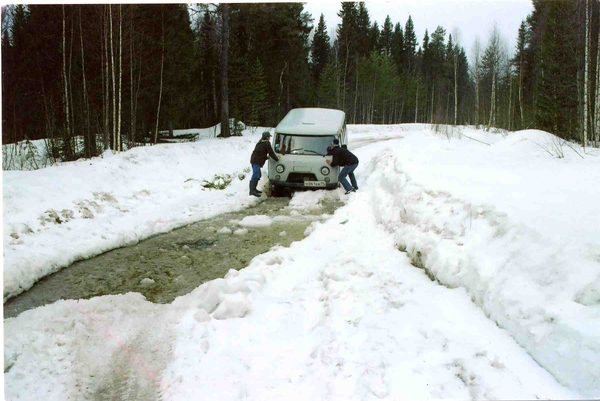 About thirty villagers work outside the settlement. But the level of unemployment is still high.
About thirty villagers work outside the settlement. But the level of unemployment is still high.
In such situation the traditional economy is very helpful for Pyssa residents. Now the forest areas which have not been drawn into economic circulation (including two massifs of primeval forest: “Udorsky” and “Pyssky” complex nature reserves) are significant for biodiversity conservation as well as for traditional use of natural resources by the locals, the indigenous people.
Traditional subsistence of the locals in Udora district was always flexible enough. For centuries the extracting economy ensured the balance of the budget of peasant family. Hunting for upland fowl in nearby lands was significant for family economy. Fishery as well as hunting had long-standing traditions and it was the integral part of family economy. Up to now the harvesting tradition and the traditional nature use are popular here.
The meetings and the interviews with the villagers which were organized under the “Forest Village” project revealed that all forty respondents from Bolshaya Pyssa were hunters. And 20 of them were unemployed and hunting was the sole source of income for them. Hunting traditions are passed from generation to generation. Boys begin to participate in traditional economy from an early age: many of the respondents began to hunt at the age of 8 – 10 at first with their father and they hunt independently at the age of 12. Only five villagers from 40 respondents do not have their own hunting hut. There are 186 hunting huts on the territoryof Bolshaya Pyssa settlement and most of them are used by the locals.Virgin forest covers about half of the territory and the system of tribal lands is completely preserved there. Territories which were not in industrial development ensure the conservation of the population of commercial species.
The representatives of the local society together with hunters endorsed the initiative of the “Forest Village” project. The results of joint interview helped to estimate the role of traditional nature use in the subsistence of the locals, the territories of traditional nature use were mapped. These territories are significant for the locals but they have no an official status. This fact is important for their further recognition and preservation. Prepared information became the basis for the negotiations and the first in the Komi republic freewill Agreement concerning the Relationship in forest management between the local community “Udorachi” and the OJSC “Mondi Syktyvkar” as the representative of large timber business was concluded.
The values of nature and history
The singularity of the Udora district which includes its nature and history, unique material and intellectual culture, the traditions of subsistence and unique architecture, Mezenskaya painting on wood and outspread of the Old Belief and many other things are a high-demand tourist resource. Gradually the residents of Bolshaya Pyssa rural settlement realize this fact and they begin to develop this new kind of economy management. The tourist routes to Pyssa virgin forest and to the Ioanikieva cell which is the place of pilgrimage of many people including the guests of the republic are developed. According to Albert Vasilevich Loginov, the local historian and guide, Anikei (Ioaniky) was a hermit, true devotee and he lived about three hundred years ago in the period of church schism. “The story goes that Anikei had a white horse. The hermit lived by himself and the village lived by itself. But when the residents of Latyuga village asked him to till their fields he did not refuse. People say that Anikei with his horse walked on water as on ground. But on the back way his horse went hoof-deep in water as if it was weighed down with human evil. Anikei was loved very much and when he died he was buried near his cell”. And now the locals remember about him and continue visiting this place.
The Guest Houses which were founded by the local enthusiasts of rural tourism function in Politovo and Patrakovo villages. D.I.Chuprova, the native of Patrakovo village, entertains tourists in her Gests Houses in native village for several seasons. The “To Podnebesnaya village” tour which was proposed by Chuprova was appreciated by many people – guests from Syktyvkar and Yekaterinburg, Latvia and Poland…
Pyssa is the birth-place of many famous people who evinced their talent and character in different spheres. One of them is Maxim Danilov, Honored Artist of Russia, People’s Artist of the Komi Republic, and Laureate of the prize named in honour of I.I.Avramov, and he was awarded the badge “For the achievements in culture”. Among the natives of the village who glorified Pyssa by their creative work we can notice also Evgeny Afanasyev, a journalist and writer… The older generation of the republic citizens remembers Irina Ustinova, the native of Pyssa who was well-known in the Komi republic as a state and public figure.
Now there are interesting, not indifferent, creative people in Pyssa. For example, Albert Loginov, the above mentioned local historian, social activist, active participant in the implementation of many socially important environmental projects, the member of the International Forest Stewardship Council; Ekaterina Andreeva (you can see her on the photo), a beautiful singer and folklore specialist.
“I want to show spiritual beauty of these people…”
Pyssa can be named as the land of hunters and of poets. It is not coincidentally that this Udora village inspired Vladimir Fedorovich Stozharov, the man of natural gifts, the talented painter, one of the best soviet painters to create a lot of paintings. In 1960- 70th he visited Mezen repeatedly and he got lasting impression from Bolshaya Pyssa. The following paintings: “Bolshaya Pyssa village. Spring”, “Bolshaya Pyssa village. Spring snow”, “Bolshaya Pyssa village. Spring flood”, “Bolshaya Pyssa village. Frosty night” and many others are in different art museums and galleries in Smolensk, Nizhniy Novgorod, Irkutsk, and in the private collections in Russia and Germany.
On the website of Irkutsk art museum where the painting “Bolshaya Pyssa village”(1967) can be found we can read the following words about it:” Several rows of commodious six-walls log Komi houses go up on the tall bank of great Mezen river. In the picture they stretch to both sides and in leisurable rhythm they go down to the water which reflects the purple of the sunset. It reigns over all; it overmasters the complex range of the colors of wooden buildings: heather, deep-brown, yellow; it imparts a solemn radiance to the picture. These houses were significant for the painter and he wrote:”…I …try not only to paint one or another house… I want to show the beauty of the souls of the villagers through the character of their houses, through the character of their land”
For the article we used the information and the photographs which were given by A.V.Loginov, D.I.Chuprova, also we used the information from the following websites: http://genamikheev.narod2.ru and http://www.museum.irk.ruand from the archive of the “Silver Taiga” foundation

